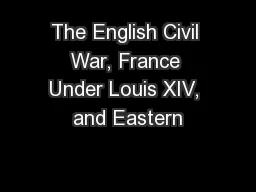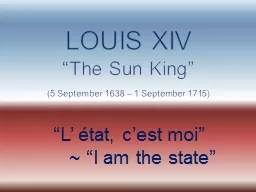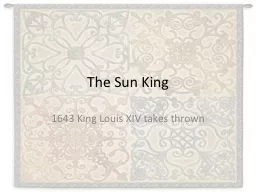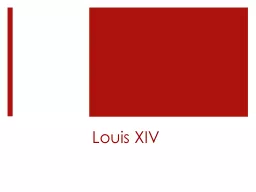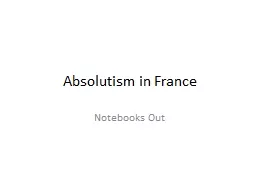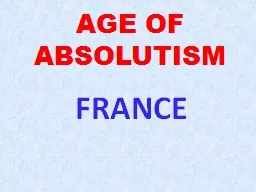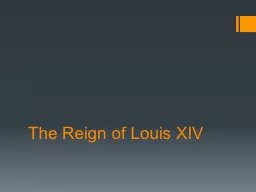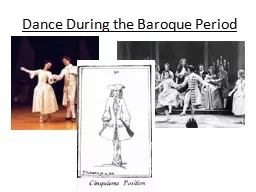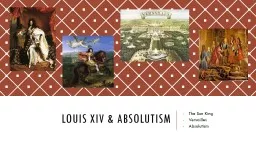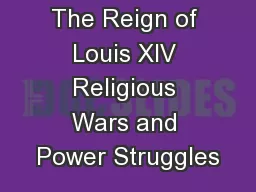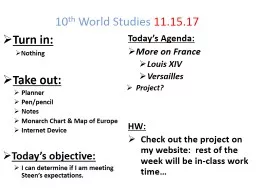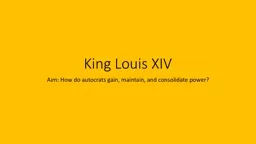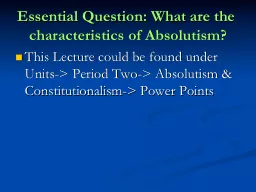PPT-The English Civil War, France Under Louis XIV, and Eastern
Author : briana-ranney | Published Date : 2016-05-20
Unit 4 1 Netherlands Venice Switzerland few democracies amp republics 2 Netherland won total independence from Spain as a result of the 3080 years war Pre Notes
Presentation Embed Code
Download Presentation
Download Presentation The PPT/PDF document "The English Civil War, France Under Loui..." is the property of its rightful owner. Permission is granted to download and print the materials on this website for personal, non-commercial use only, and to display it on your personal computer provided you do not modify the materials and that you retain all copyright notices contained in the materials. By downloading content from our website, you accept the terms of this agreement.
The English Civil War, France Under Louis XIV, and Eastern: Transcript
Download Rules Of Document
"The English Civil War, France Under Louis XIV, and Eastern"The content belongs to its owner. You may download and print it for personal use, without modification, and keep all copyright notices. By downloading, you agree to these terms.
Related Documents

